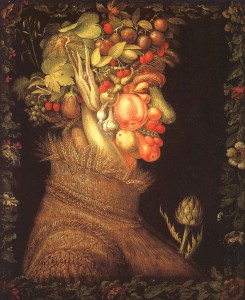Events today both celestial and closer to home: It is Father’s Day and it is solstice day. Here on the surface of the planet we honor our fathers, those we were given and those that we chose or who chose us. I know of two friends who are probably having the most amazing Father’s Day right now: they adopted a family of three brothers and sisters just last week. And so we salute all the fathers on this day… as well as all the men out there who have been like fathers to others. You know who you are. Happy Father’s Day.
And as we celebrate and honor our fathers, grand workings are taking place above our heads in the celestial realm. Here in the Northern Hemisphere at 12:39 PM Eastern Daylight Time today, the 21st of June, comes summer by the almanac. It is the summer solstice, marking the furthest north the sun will appear in the sky before the Earth begins once again to shift in the opposite direction. The sun will appear to stand still there at its northern zenith, and that’s the origin of the word solstice, from the Latin sol stetit, “sun stands still.” The days have been lengthening since the winter solstice in December, but now once again daylight begins to wane. Tomorrow there will be a few seconds less sunlight than today, and the next day a few seconds less, and so it continues until the winter solstice comes once more next December. Each day slightly different than the one before and the one to follow: the constant rearrange.
It is the start of summer by the almanac, but by traditional reckoning of time, summer began at the start of May with the arrival of May Day. This older approach to time places the solstices and the equinoxes at the middle of each season, which, when you think about it, is a considerably more logical approach. Looking at things as our ancestors did, it begins to seem odd to mark the start of summer, for instance, with the last of the lengthening days, and the start of winter with the last of the lengthening nights. These are, more naturally, midpoints of the seasons.
And so our ancestors thought of this time as Midsummer, with Midwinter at the winter solstice. Pagan festivals grew up around these celestial events and eventually, with the spread of Christianity, so did Church festivals. To Midwinter the Church attached the birth of Christ; to Midsummer, the birth of John the Baptist. And while we don’t celebrate these holidays precisely on the solstice, they are both solidly connected to the celestial events and the times of sol stetit with both Christmas and St. John’s Day just a few days after their respective solstice, the sun appearing to stand still at both.
Across cultures, these transitional times were long considered magical. Witches and fairies and sprites were more active, animals gained powers of speech. Our friend William Shakespeare was well attuned to this lore: his comedy A Midsummer Night’s Dream, which I have long loved, is set on St. John’s Eve. In the play, the realm of the fairies and the realm of the mortals blend as one, at least for a night or two. This is the magic that can be conjured at such times, as the balance of light and dark on our planet begins to shift again. Summer is here, but it’s been here a while already. Magic is here, too, revealed to us if we are open. These are interesting days. Read more here at the blog come St. John’s Eve on the 23rd.
Image: Summer by Giuseppe Arcimboldo. Oil on canvas, 1573, [Public domain] via Wikimedia Commons.

Beautifully written: thank you John.